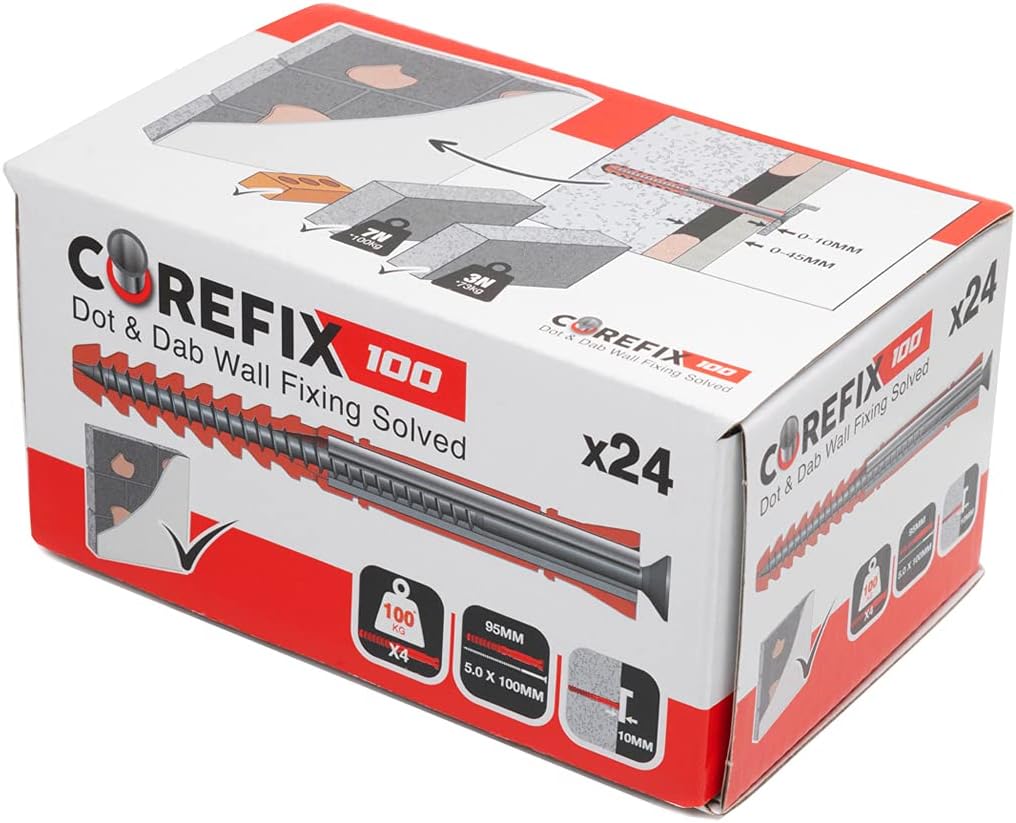About this deal
Once you have applied the adhesive, press the plasterboard onto the wall and hold it firmly until you are sure it is attached. Wide range of U-values achievable to suit project requirements through our extensive selection of Gyproc ThermaLine laminate types and thicknesses.
DriLyner Dab wall lining system | British Gypsum DriLyner Dab wall lining system | British Gypsum
Once the plasterboard is in position use the marks on the floor and wall and draw lines on the plasterboard using the spirit level. The adhesive helps repair existing walls, providing a level surface for a better finish when plastering or decorating. The downside of dot and dab is that the plaster is more prone to cracking than a traditional wet plaster finish. The plasterboard adhesive will dry pretty quickly so it makes sense to cut the plasterboard so it's ready to go when needed. DriLyner Dab is a lining system for either masonry or plastered backgrounds, where Gyproc Plasterboards or Gyproc ThermaLine insulated boards are fixed directly and simply using Gyproc DriWall Adhesive and Gyproc Sealant.
offer up bracket and mark the fixing points (normal caveats apply about ensuring you watch out for pipes and cables, and that you have a sound wall to fix to. DriLyner Dab is a versatile and simple wall lining system that provides key thermal and acoustic performances to be achieved through direct fixing of the correct Gyproc Plasterboard or ThermaLine Laminate to masonry or plastered backgrounds. It is always best to consult an expert on what plasterboard type should be used and what technique is best applied to fix plasterboard to an application. Bring your dream home to life with expert advice, how-to guides and design inspiration, direct to your inbox. Dot and dab (also known as dry lining) is most commonly used to fix plasterboard to walls, but it can also be used to fix boards to ceilings, or insulated plasterboards to walls.
Gyproc DriWall Adhesive | Plasterboard Dot and Dab Adhesive Gyproc DriWall Adhesive | Plasterboard Dot and Dab Adhesive
Plasterboard walls, on the other hand, will almost always sound hollow; you can determine this by giving the wall a quick knock.This leaves an imprint on the back of the plasterboard which you can cut around before you put the plasterboard up. If you have any concerns about the plasterboard being straight and level, a featherhead tool can be used to ensure a smooth surface, as its edges are straight by design. So you will probably only need to make minimal cuts if plasterboarding a straight wall with no windows or doors. Since you are avoiding the faff of wet plastering, you can also paint your application in record time – as you cut out applying and drying times. Test with the level again and make any fine adjustments with the featheredge until the plasterboard is square.
Dot and Dab Plasterboard: A How-To Guide for Smooth Walls Dot and Dab Plasterboard: A How-To Guide for Smooth Walls
And nobody wants to see their beautifully painted wall suddenly heading towards them when they are comfortably sitting watching TV. Gyproc DriWall Adhesive is the tried and tested way of achieving a perfectly level wall when dabbing plasterboard linings to existing backgrounds like masonry walls. If one of your goals is to ensure that a room is soundproof, then dot and dab may not be the best option.I use nylock nuts for the back fixings so they stays in place when the final surface nuts are tightened. Allows minor surface irregularities to be taken out within the drylining cavity formed by the gypsum adhesive dabs. To view the purposes they believe they have legitimate interest for, or to object to this data processing use the vendor list link below. Use offcuts of plasterboard to keep the plasterboard off the floor (Image credit: British Gypsum) Is Dot And Dab Better Than Plastering?
Dot and Dab: What Is it? - Materials Market Dot and Dab: What Is it? - Materials Market
This is because dot and dab does not always create a completely airtight seal, which means that sound can travel through the wall. If you’re not familiar with how plasterboard can be fixed to walls and other applications, then buckle up as we guide you through the ins and outs of the dot and dab method: a process in which plasterboard is attached to a concrete or brick wall – generally a solid masonry wall. Any competent DIYer will be able to tackle it with relish and enthusiasm and you might well be surprised at how good the results look. Provides a thermally responsive environment with quick heating time as a result of positioning the insulation layer on the warm side of the room. When they're used in brick there's no real guarantee that you'll hit something solid - could be mortar - or that the bolt won't be close to the edge of a brick so it fractures when expanding as it is tightened.However, when weighing up wet plaster vs drylining– or dot and dab as it's also known – it is important to note that dot and dab is not as durable and robust as wet plastering.
